The Mohegan Tribe and the New Nation
By Faith Damon Davison
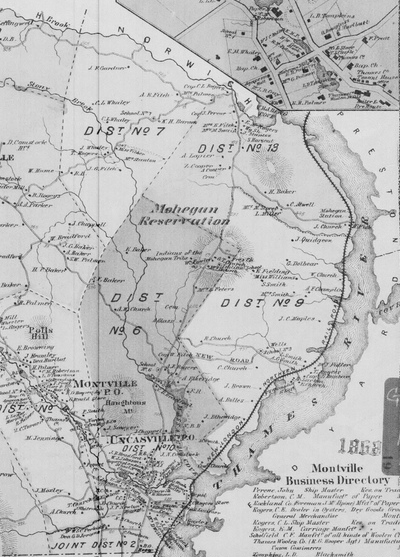
Map detail of Mohegan Reservation, 1868.
After the Revolutionary War, Norwich prospered. But Mohegans were losing their land. The State of Connecticut ignored Native people’s claims. The state sold the land to white men. The Mohegans tried to fight in court but did not get justice.
Many Mohegans wanted a better life. In 1783, many left Connecticut to resettle in New York. They followed Reverend Samson Occum. Reverend Occum was a Mohegan who had become a Christian minister. He led Christian Indians from southeastern New England tribes. This was called the Brothertown Movement.
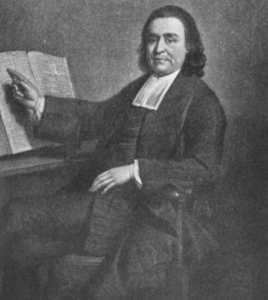
Samson Occum from William DeLoss Love, “Samson Occom and the Christian Indians of New England,” 1899
The United States found itself at war again with England in 1812. The mighty British navy blocked trade with the United States. Connecticut’s economy, including Norwich’s, suffered.
Nature continued to take its toll. The Thames River silted in. This made the river shallow. Large ships could not reach Norwich. Cold winters iced over the river several years in a row. Springtime floods disrupted business. The new railroad took goods to market instead of ships. Norwich’s economy continued to decline.
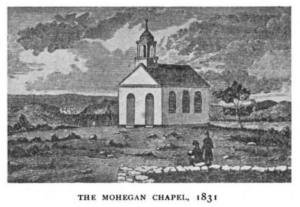
Mohegan Chapel, 1831. From William Deloss Love, “Samson Occum and the Chrisitian Indians of New England,” published in 1899
The remaining Mohegans farmed to feed their families. Some had trades or businesses. They built stonewalls or ran a saw mill. Others became sailors. Mohegan men and women went to work in the local mills. Some Mohegan women worked as housekeepers, did laundry, and sold baked goods.
Most Mohegan families kept a milk cow and sold butter. Everyone kept chickens and had a family vegetable plot. Some gathered and sold shellfish and berries. They would travel by trolley as far as Watch Hill, Rhode Island to sell their goods. The Mohegan Church had a Sewing Society. The church would put on a “Wigwam” every year. Crafts were offered for sale. A dinner was held to raise money for the church. The wigwam is still held every year during the third week of August.
In 1872, the State of Connecticut divided the Mohegan reservation lands among the tribal members. The state kept large parcels of land to sell. The money from the sale would benefit the tribe. The state also made Mohegans state citizens. This meant they had to pay property taxes to the state. Many Mohegans sold their land and moved away to start a new life.
The Mohegans in the 20th Century
The early 20th century was a difficult time. The influenza epidemic swept through southeastern Connecticut. Many Mohegans served in WWI. The Great Depression in the 1930s caused economic hardship. Many Mohegans with businesses and farms survived. They were able to stay in New London County, close to their tribal land.
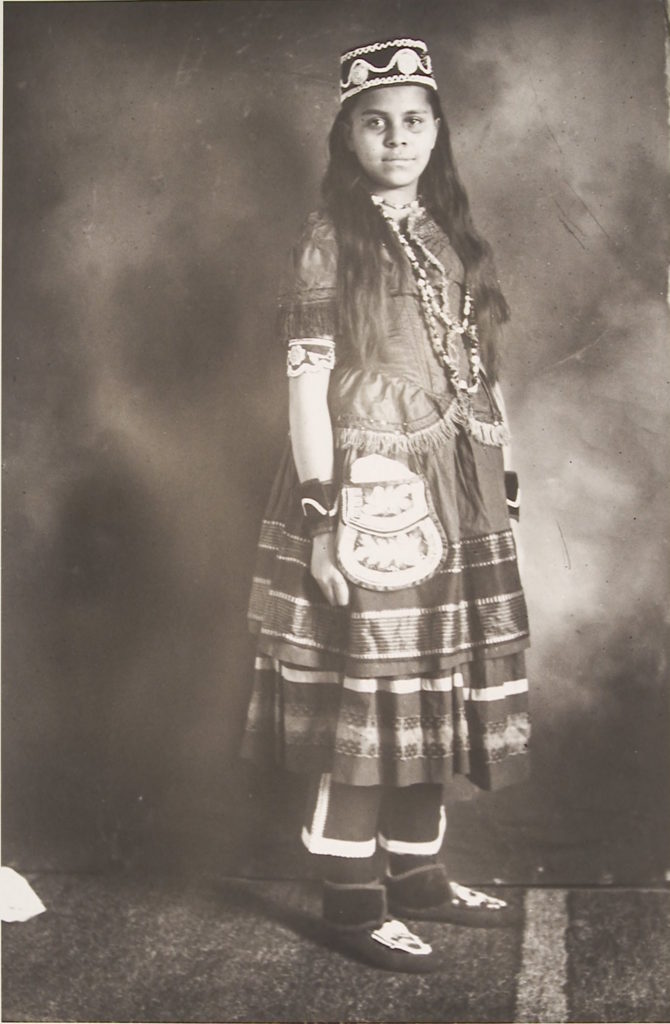
Beatrice Condon, a Mohegan girl, 1935. Mills Photograph Collection, Connecticut State Library
During the Depression, Gladys Tantaquidgeon was hired by the federal government’s Office of Indian Affairs. She worked with poor tribes in the west. Other tribal members worked with the federal government to get citizens back to work. Many Mohegan men fought during World War II. Others worked in the defense industry.
Throughout the centuries, Mohegan culture was kept alive. In 1994, the U. S. Government recognized the Mohegan Tribe as a sovereign nation. The Mohegan Tribe is governed by a constitution. It calls for a Tribal Council and Council of Elders elected by the Mohegan people.
In 1998, the tribe purchased land from the State of Connecticut. The land was part of Fort Shantok State Park. It was the heart of the Mohegan ancestral homeland. A Mohegan burying grounds is located there. Mohegans came together there every August.
In 1997, the Mohegan Tribe’s Council of Elders adopted this vision statement:
We are the Wolf People, children of Mundo, a part of the Tree of Life. Our ancestors form our roots, our living Tribe is the trunk, our grandchildren are the buds of our future.
We remember and teach the stories of our ancestors.
We watch. We listen. We learn.
We respect Mother Earth, our Elders, and all that comes from Mundo.
We are willing to break arrows of peace to heal old and new wounds. We acknowledge and learn from our mistakes.
We walk as a single spirit on the Trail of Life. We are guided by thirteen generations past and responsible to thirteen generations to come.
We survive as a nation guided by the wisdom of our past. Our circular trail returns us to wholeness as a people.
It is so.
Today the tribe is seeing many of its members returning to the home of their ancestors. They are getting involved in their Mohegan community, and in the greater region.
Faith Damon Davison is a Mohegan tribal elder and Nonner, an honorary title. She was archivist for the Mohegan Library and Archives, the rare books, documents and map collections.
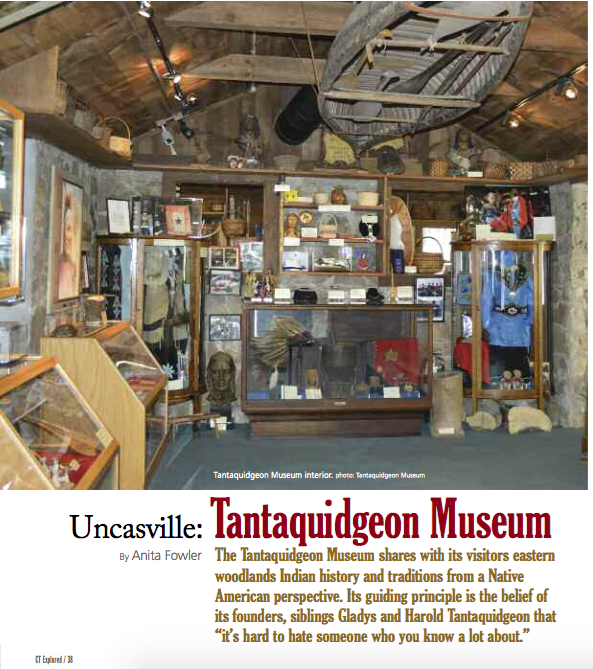
Connecticut Explored, Summer 2016






